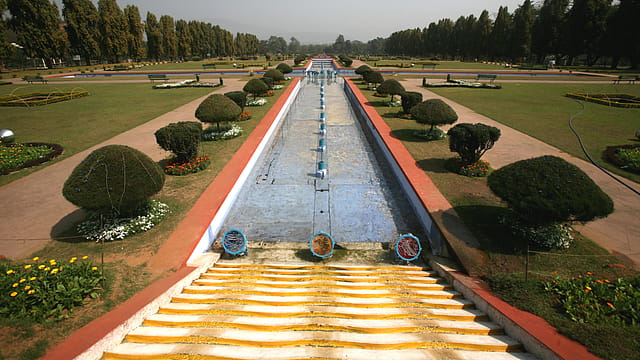The Jamshedpur model
ADVERTISEMENT

As luck would have it, due to a family emergency, I was visiting the place where I was born, after 19 years, even as murmurs about the Jharkhand elections spread across the lush and beautiful but poverty-stricken state spread over last weekend.
Landing in Ranchi on a flight from Delhi, I hired a car to drive three hours to Jamshedpur—India’s most successful, privately-run town; it has near zero electricity supply failure and provides drinking water on the tap to its around 1.3 million people.
These achievements which have been maintained in this town for around 90 years by a civic management system run, and perfected by, the Tata group, one of India’s oldest and most diversified conglomerates. Jamshedpur, also known as Tatanagar (that is the name of its railway station), is the home of one of the most venerable parts of the Tata group, the steel manufacturer Tata Steel (earlier known as Tata Iron and Steel Company or TISCO, which is what many old-timers in Jamshedpur still call it). Even the name Jamshedpur comes from the great patriarch of the Tata clan, its founder, Jamsetji Nusserwanji Tata, who formulated the plan to build India’s first steel factory in a remote but lush part of the Chhota Nagpur plateau at the turn of the 20th century. The factory in Jamshedpur producing more than 27 million tonnes a year remains the heart of Tata Steel ($23 billion in revenues last year) whose operations are now spread across more than 25 countries. Tata Steel started in 1907 while the town was named Jamshedpur in 1919.
Public amenities in Jamshedpur is run by the Jamshedpur Utilities and Services Company or Jusco, which delivers everything from sewage and solid waste management to water supply and electricity (one of the cheapest rates in India at a delivery efficiency of virtually 100%), and builds roads (some of the smoothest in the country). Its operations are spread across the city of around 14,500 acres.
January 2026
Netflix, which has been in India for a decade, has successfully struck a balance between high-class premium content and pricing that attracts a range of customers. Find out how the U.S. streaming giant evolved in India, plus an exclusive interview with CEO Ted Sarandos. Also read about the Best Investments for 2026, and how rising growth and easing inflation will come in handy for finance minister Nirmala Sitharaman as she prepares Budget 2026.
The Tatas also run the famed Tata Main Hospital or TMH (where I was born) and its allied clinics. It is one of the best public hospitals in India.
Throughout my childhood, almost every summer and winter, during school vacations, I made the trip from Kolkata, where I grew up, to Jamshedpur, where many of my relatives lived. I was, during this journey, unfailingly reminded of what works and what does not work in Jamshedpur. The standard joke was that you can tell where government services end (neighbouring the railway station) and where Jusco’s domain begins, soon afterwards, by the quality of roads and buildings around you. The government land was dirty, the roads were broken, and all around there was an air of somnolent dereliction.
But the roads and surrounds maintained by the ‘Tata company’ as all my relatives, and everyone else in Jamshedpur called it, were neat and clean, and always emitted an air of confident and sober prosperity.
The people who lived in Jamshedpur would turn their noses up a bit about adjoining government-run towns like Adityapur and Mango (this continues even today as I noticed when I was there). The characteristic squalor in those towns has always been used by the citizens of Jamshedpur to tell themselves what they would become if the town wasn’t run by the Tatas (who at the last count run it at a deficit of around Rs 250 crore a year).
Over the years, many people I know who had left Jamshedpur to study and work inevitably seemed to return to their chic little hometown where the streetlights rarely, if ever, failed, and the golf course is always a very short drive away. After all Jamshedpur is that one place in Jharkhand which can promise what even the state capital Ranchi cannot—supply of electricity without outages (state capital Ranchi suffers anywhere between five to seven hours of what is called ‘load shedding’ on most days).
While there have been intermittent noises about taking the administration of Jamshedpur town away from the Tatas, politicians there know that that might be rather unpopular. In fact, any referendum on the issue is likely to show widespread support for Jusco (it is pioneering in the adoption of technology and had launched a citizen call centre for civic complaints more than a decade ago, and is now working to adopt the Internet of Things in its dealings).
Far from being a challenge to any government, Jamshedpur is a continuing boon to the Jharkhand government, providing it with a small but world-class town. As industrialisation spreads in India, Jamshedpur also provides a model for the way enlightened private companies can operate under broad government oversight and partnership to take charge of townships and deliver world-class ‘smart’ cities using the best technology and town management systems. As my taxi driver, a resident of Ranchi, told me, Jamshedpur is the pride of Jharkhand.
It is a model worth replicating and celebrating.
Views are personal.
The author is a historian and a multiple award-winning author.
